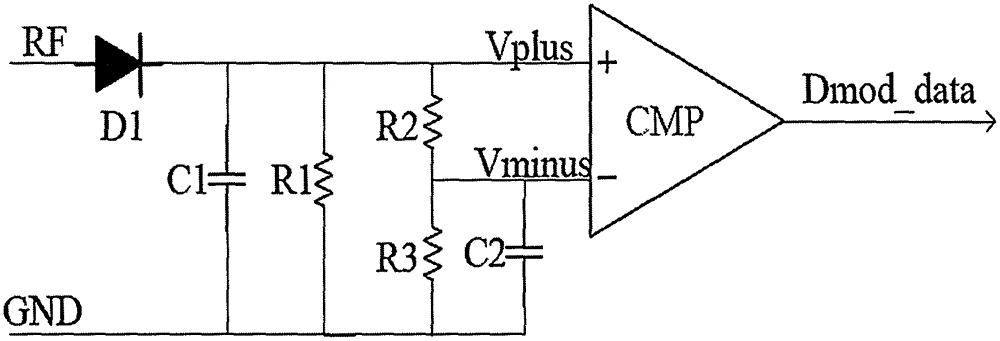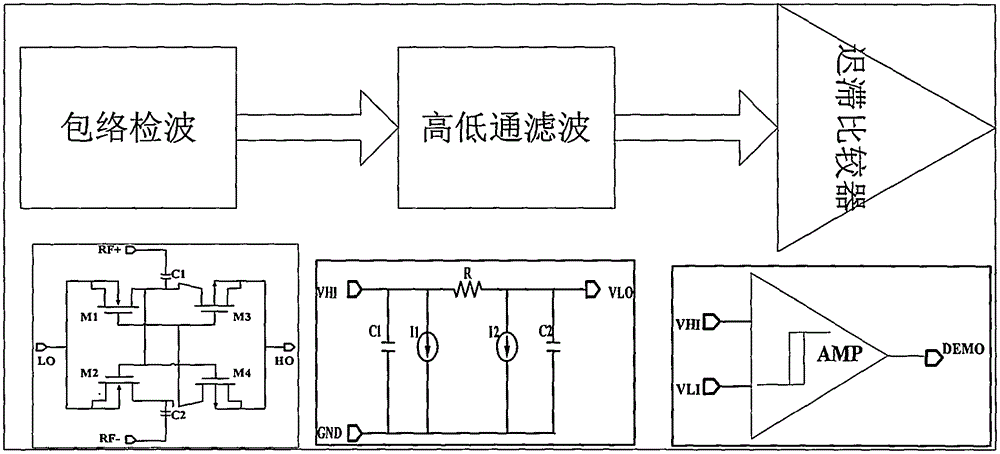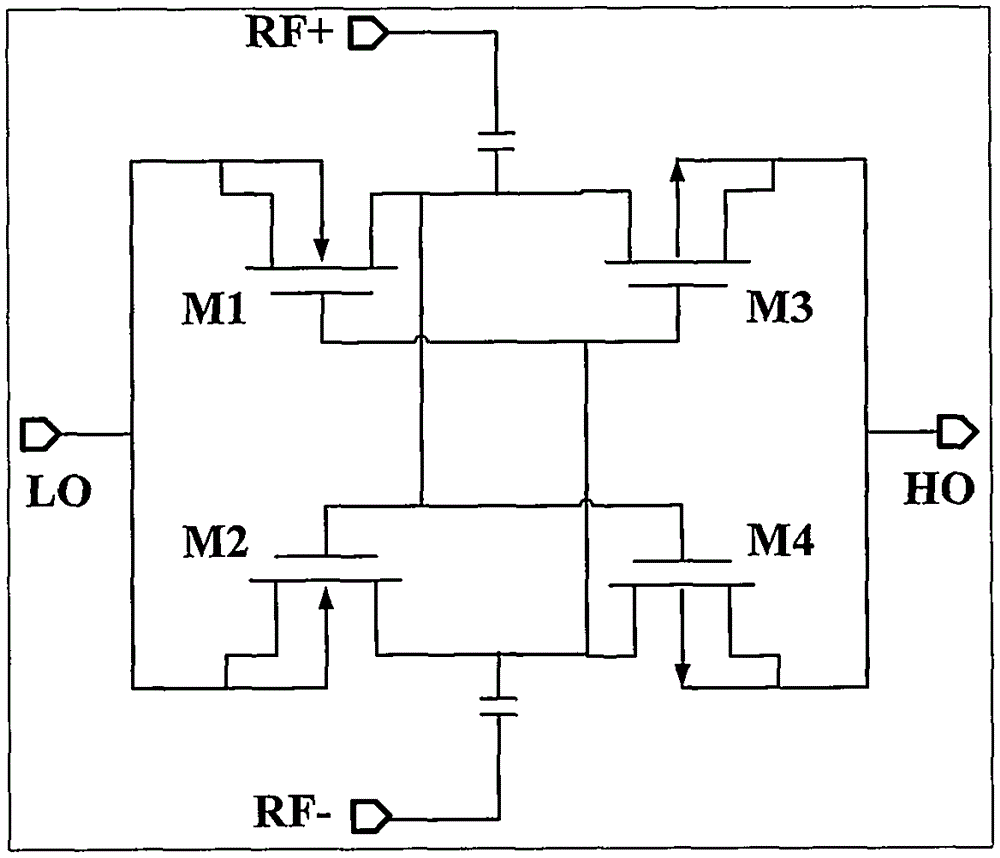Demodulation circuit applied to ultrahigh-frequency tag
A demodulation circuit and ultra-high frequency technology, applied in the field of IoT tags, can solve problems such as limited working range, unfavorable envelope demodulation, and inability to realize wave detection functions
- Summary
- Abstract
- Description
- Claims
- Application Information
AI Technical Summary
Problems solved by technology
Method used
Image
Examples
Embodiment Construction
[0015] The new demodulation circuit design focuses on innovations in envelope detection and high and low pass filtering. In order to make the technical means, creative features, goals and effects achieved by the present invention easy to understand, the following focuses on the realization of these two parts of the circuit.
[0016] The structure of the envelope detection module is as follows: image 3 As shown, the gate cross structure is mainly composed of four MOSs M1~M4, the LO terminal is connected to low level (GND), the source and substrate of M1 and M2 are connected to LO, the source and substrate of M3 and M4 are connected to The HO terminal is connected, the drain terminals of the M1 and M3 tubes are connected together and connected to the capacitor C1, and the other end of the capacitor C1 is the RF+ terminal of the input antenna; similarly, the drain terminals of the M2 and M4 tubes are connected together and connected to the capacitor C2, and the capacitor The ot...
PUM
 Login to View More
Login to View More Abstract
Description
Claims
Application Information
 Login to View More
Login to View More - R&D
- Intellectual Property
- Life Sciences
- Materials
- Tech Scout
- Unparalleled Data Quality
- Higher Quality Content
- 60% Fewer Hallucinations
Browse by: Latest US Patents, China's latest patents, Technical Efficacy Thesaurus, Application Domain, Technology Topic, Popular Technical Reports.
© 2025 PatSnap. All rights reserved.Legal|Privacy policy|Modern Slavery Act Transparency Statement|Sitemap|About US| Contact US: help@patsnap.com



